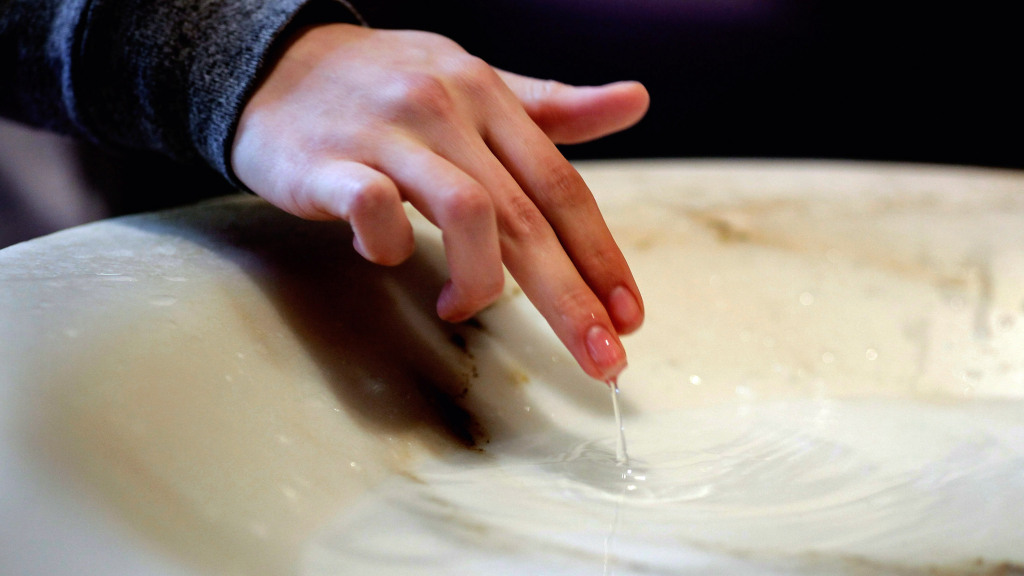So-called “Holy Water” is water that has been blessed by a member of the clergy and is believed to retain special blessing. The superstitious practice is used by Roman Catholics, Anglicans and the Eastern Orthodox. Chiefly, Holy Water is believed to protect against sickness and evil. Unfortunately for the residents of Ethiopia, however, Holy Water is to blame for a devastating cholera outbreak (source link). The World Health Organization (WHO) says that it’s Holy Water that has led to ten deaths and 1,200 positive cases of the deadly disease.
The disease has spread far and wide in Ethiopia’s Tigray region. The WHO says that the poisonous water has been traced to monasteries and the holy water depositories found there. The health organization has pled with religious groups to stop using their Holy Water for the sake of public health, but have thus far been unsuccessful in stopping the practice.
Whereas locals typically do not drink the water from rivers without some form of sanitization, they do come into contact with water blessed by priests, which comes directly from rivers and receives no purification process. Convinced that the priests’ blessing will purify the water that is said to repel demons, make the sick well, cure illness, and bring good luck. Apparently, Holy Water can do none of those things and can, in fact, make people more susceptible to disease and illness.
The two religious groups most responsible for the use of Holy Water in Ethiopia include Roman Catholics and the Ethiopian Orthodox, a subset of Eastern Orthodoxy.
The Roman Catholic formula for making Holy Water is the following recitation…
I exorcise thee, creature of water, in the name of God the Father almighty, in the name of Jesus Christ, his Son, our Lord, and in the power of the Holy Spirit, that you may put to flight all the power of the enemy, and that enemy and to root out and, along with his fallen angels through the power of our Lord Jesus Christ, who shall come to judge the living and the dead and the world by fire. O God, who for the salvation of the human race has built Thy greatest mysteries in the substance, in your kindness hear our prayers, and with the element to this, for many kinds of purifications of his well-prepared, the power of Thy blessing, Serve it; the creation of Thy mysteries, serving as an agent of divine grace; is sprinkled with this water in their houses or in the buildings of the faithful, that whatever might be free from all uncleanness, he is freed from every harm. It is not no pestilent spirit, no taint of corruption; let all the wiles of the lurking enemy; or to provide for the safety and peace of the inhabitants of that which is, and if there be any, by the sprinkling of this water, so that health, through the invocation of Thy holy name, made secure against all attacks. Through the end.
Every year, there are roughly 1.3 to 4 million cases of cholera, and 21 000 to 143 000 deaths worldwide due to the disease. This is the first time an outbreak has been traced to tainted Holy Water. Ritualistic bathing, which is a holdover from Ethiopian nativist religion but is combined with Roman Catholicism and Eastern Orthodoxy there, is probably the cause of the outbreak and the quantity of water is sufficient to contaminate the human body.
While both Roman Catholics and the Eastern Orthodox claim that Holy Water has supernatural applications, studies suggest that Holy Water is significantly less healthy than water you can get from the faucet or tap. In fact, 86% of samples of Holy Water contains traces of fecal matter and a single milliliter of Holy Water contains 62 million bacteria (source link).
Biblically, of course, “Holy Water” is not a thing. Its first reference goes back to the year 400 in the Apostolic Constitutions. The first ecclesiastical use of so-called Holy Water wasn’t until the Testamentum Domini in the fifth to sixth century, when its inclusion in the Mass began.











